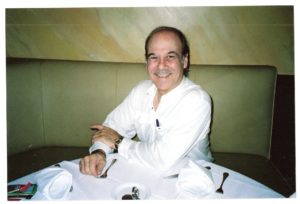A Very Special Moment In Time: It All Began With “Cheesecake”—Seriously!—Part I
[AdSense-A]
“Our town,” Miami Beach— one of the world’s greatest resorts and one of the most utterly corrupt cities in North America—has had more words written about its history than any other city of its size in America. The story is so incredible, so fascinating, so intriguing and so replete with so many different and true and real characters that “fascinating” is one of the minor adjectives that can be used to describe that history.
But perhaps most interesting is the fact that Miami Beach came to prominence not because of the names of its great, original founders, builders and developers but because one man, at the time recognized as the greatest p.r.—public relations—person in America, conjured up a word that he not only believed would describe the swimsuit and—for the time—somewhat skimpy outfits to be worn by the beautiful models that his vision foretold him would be the salvation of the failing land enterprise on an island known as Ocean Beach across Biscayne Bay from what was already being called “the Magic City.” What occurred, of course, was that the use of that word to describe those models would make everybody in America—at least all of those east of Kansas City—aware of Miami Beach, that mostly mangrove sandbar island that Carl Fisher and Jim Allison had purchased from John S. Collins and his son-in-law, Thomas J. Pancoast.
Fisher and Allison spent an enormous amount of money clearing land and preparing the oceanfront island for sale, working hand in hand with the fabled Lummus Brothers, J. N., the first mayor of Miami Beach, and J. E, the third mayor of Miami. (That’s LumMUSS, not “Loomis:” there are no o’s in “LumMUSS!”) With the assistance of John H. Levi, a former yacht broker who had handled the sale of a luxurious vessel to Fisher and then went on to become Fisher’s and Allison’s “ramrod” (right hand man) in the building of Miami Beach, and C. W. “Pete” Chase, who would become their head salesman following the departure of Edward E. “Doc” Dammers for a reason to be discussed in a future column, Fisher and Allison worked day and night to sell land on the island. Unhappily for them, and even after offering the land free to anyone who would build a house and live on the property, there were (very) few takers.
The six men were nearly out of ideas when Levi, following his return from a trip to New York, casually announced to Fisher, Allison and the Lummus Brothers that he had the solution to the “selling problem” but that they would have to spend some money to bring in (according to Levi), the best p. r. and promotions guy in the world. “And who might that be?” Fisher asked. Whereupon Levi replied “Steve Hannagan.”
In the years that have passed since Hannagan’s untimely (and to some, unseemly) termination as Miami Beach’s publicity director in the late 1940s or very early 1950s, and with the bringing-in to replace him of Hank Meyer, and, later, Harold Gardner as the city’s publicity and public relations directors (the title preceding today’s director of tourism or protocol or whatever term the powers that be want to use), Steve Hannagan’s name, sadly and unhappily, has almost faded from the public consciousness except when memorialized—as it should be—in Miami Beach history books particularly this writer’s Sunshine, Stone Crabs and Cheesecake: The Story of Miami Beach wherein Hannagan receives the long overdue accolades that he is absolutely entitled to.
So what, exactly, did Hannagan do that makes him such an important figure in Miami Beach’s more than one hundred and forty-eight year (from the time of the mangrove sandbar island’s discovery in 1870, not it’s 1915 incorporation date) history? Well, even if he had done nothing else, it was Steve Hannagan who came up with the idea of using beautiful young women wearing skimpy (for the time) bathing suits in glamorous and seductive poses, running down the beach holding hands, posing langorously on saw walls, leaning against palm trees, lolling on beach chairs and park benches and generally doing what beautiful young women do in ads such as those: look enticing as they participated in the promotions that were the predecessors of Jim Dooley’s famous Northeast Airlines Cuh monnnn down! commercials. And what did Mr. Hannagan call those beautiful young women in their strikingly attractive poses? Why “cheesecake,” of course!
Next time, more on the cheesecake story including how Carl Fisher’s wife, Jane, became part of “the look!” Until then, “y’all be good” and if you cain’t be good then at least be careful. We’ll be back with you shortness!
[si-contact-form form=’2′]


